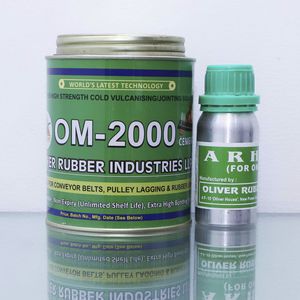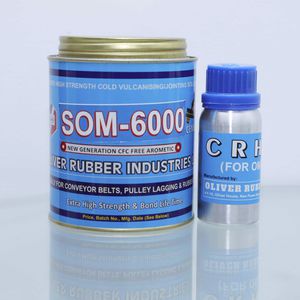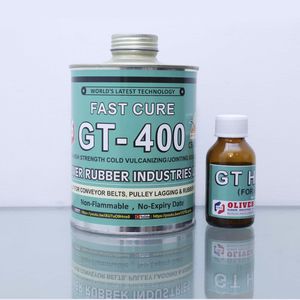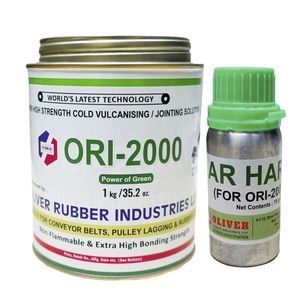
- Industrial machines and equipment
- Welding and Assembly
- Rubber adhesive
- Oliver Rubber Industries LLP
Cold vulcanizing adhesive GB-3150rubberfor metalfor rubber
Add to favorites
Compare this product
Characteristics
- Chemical composition
- rubber
- Type of substrate
- for metal, for rubber
- Number of components
- two-component, multi-component
- Technical characteristics
- flame-retardant, fast curing, instant, high-temperature, abrasion-resistant, fire-resistant
- Applications
- industrial, for bonding, sealing, cold vulcanizing, conveyor belt
- Working temperature
180 °C
(356 °F)Max.: 250 °C
(482 °F)Min.: 180 °C
(356 °F)
Description
A Tin Pack of 1kg Vulcanizing Cement with KRE Hardener in a 70gm Aluminium Bottle
Do you put chili powder in a cake or pudding? Do you add sugar to your perfectly cooked, spicy pizza? What type of combo is it, you may ask? Okay, let's slightly alter the questions. Would you use cello tape to adhere the plywood used to construct your sofa? It's terrible, isn't it? That is precisely how we feel when we observe individuals joining conveyor belts made of HR, FR, and CR Grade with regular cold vulcanizing cement. These conveyor belts can withstand temperatures of up to 180°C; however, when conventional cold bonding cement is used, the joint breaks severely, thus impacting the entire manufacturing process. To produce joints of conveyor belts of such grades, we recommend using our GB-3150 Cement with KRE Hardner, since it is the best cold vulcanizing solution that can be used on it.
What are heat-resistant conveyor belts?
Heat-resistant conveyor belts are ideal for situations where the temperature of the goods being transported is over 80°C. Minerals and oils are also resistant to these heat-resistant conveyor belts. This type of conveyor belt possesses excellent heat & abrasion resistant cover rubber compound and is capable to withstand high temperatures. There are mainly three types of heat-resistant conveyor belts; (i) HR Grade (T1) Conveyor Belt is heat resistant and suitable for continuous Temperatures up to 125, (ii) SHR Grade (T2) Conveyor Belt are used for handling material up to 150-degree centigrade, (iii) UHR Grade (T3) Conveyor Belt are used for handling material up to 180-degree centigrade.
Other Oliver Rubber Industries LLP products
Cold Vulcanizing Solution with Hardener
Related Searches
- Single-component glue
- Metal glue
- Industrial glue
- Plastic glue
- Dispersion adhesive
- Bonding glue
- Two-component glue
- Sealing glue
- Fast curing glue
- Rubber adhesive
- High-temperature adhesive
- Rubber glue
- Polymerization adhesive
- Instant glue
- Multi-component adhesive
- Textile glue
- Cold glue
- Abrasion-resistant adhesive
- Flame-retardant adhesive
- Conveyor belt adhesive
*Prices are pre-tax. They exclude delivery charges and customs duties and do not include additional charges for installation or activation options. Prices are indicative only and may vary by country, with changes to the cost of raw materials and exchange rates.






